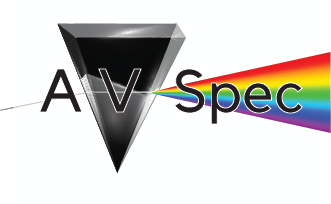Cambridge, MA (October 23, 2019)—A new era of variable star astronomy starts as the American Association of Variable Star Observers (AAVSO) now welcomes spectra observations from the AAVSO community. The new AAVSO Spectroscopic Database (AVSpec) offers the opportunity for observers worldwide to participate in scientific projects using their spectroscopic equipment. Alongside light curve data in AAVSO’s photometric database, the AAVSO International Database (AID), spectra of objects will provide a new insight on the properties of variable stars and an opportunity for more exciting discoveries.

“George and I looked at each other and both went ‘huzzah!’” John Weaver explains of his defined ‘eureka!’ moment in developing AVSpec, along with the help of George Silvis, long-time AAVSO volunteer and recent consultant. After three years of mind-bending work, AVSpec is processing observation submissions and open to use. The database is “open data,” which means it is free of charge, so that both non-AAVSO and AAVSO members can access AVSpec to view and download the data contributed by AAVSO observers.
Spectroscopy is the study of electromagnetic radiation wavelengths, each of which is emitted by an object or produced through an object’s interaction with other matter. In spectroscopy, a spectrum is a range of light separated into different wavelengths, each which projects a unique brightness. The AAVSO’s Spectroscopy Observing Section leader, Ryan Maderak, is responsible for AVSpec user resources and collaboration. He can elaborate at length on the ways in which observing spectra can answer questions poised in human minds since our collective eyes first gazed starward, although he pinpoints that, “In short, the database will fully open the door to science that has only been possible on a restricted basis before now.”
Beginner to experienced spectroscopists are encouraged to submit data to AVSpec. Crucial data can be observed and uploaded to the databases with and without high-tech equipment. Weaver, an astrophysicist working towards his Ph.D. in the evolution of galaxies, largely developed the code behind the database. He encourages those who want to increase their proficiency in spectroscopy to take a CHOICE course. The more data submitted by more observers, the better: Maderak stresses that, “One piece at a time, our users build a foundation for original scientific results.” Spectroscopic observer volunteers with interests in an array of astronomical objects increase the number of once-in-a lifetime events documented. Weaver emphasizes, “[AAVSO] understands that some observers may [see] a nova in outburst. That data is very, very, very important to catch. [The event] doesn’t last for a long time. And once it’s gone, it’s gone.”
A key collaborator in the construction of AVSpec was an administrator of the Database of Be Star Spectra (BeSS), which archives professional and amateur spectra of Be stars. Before launching AVSpec, numerous volunteers from the AAVSO community tested the code and provided valuable feedback on tool functionality and observer training material. Essentially, AVSpec is a community project—it was born through feedback from the AAVSO community, and will grow through continuous feedback and thanks to the community’s continuous support.
AAVSO’s verification procedure contributes to setting AVSpec apart from other spectroscopic databases. All spectra submitted to the database are hand-verified. “The AAVSO is proud of the careful vetting of the data submitted to its databases,” AAVSO CEO and Director Stella Kafka explains. “Even the most experienced observers may submit discrepant data due to software glitches or unidentified instrumental defects. By checking every spectrum, we ensure high-quality data for the spectra to be of use in scientific projects. We also have the opportunity to give constructive feedback to our observers as they improve their observing, data reduction, and analysis skills. This is part of the scientific process.”
A repository of spectra data that has the backbone of an effective verification process and a strong community of dedicated observers collecting and submitting data on an array of celestial objects, AVSpec will be beneficial to researchers and scientific discoveries. That it is supported by a complementary repository of photometric data indicates that AVSpec will change the way research is conducted, in that more data than ever before can now be found at AAVSO. Kafka affirms that, “This spectroscopic database, along with the educational material and manual accompanying it, is a long-awaited resource for the AAVSO community. We are excited to introduce a new chapter in the Association’s long history of collecting data.”
About the AAVSO
The American Association of Variable Star Observers is an international, non-profit, worldwide scientific and educational organization of amateur and professional astronomers who are interested in stars that change in brightness—variable stars. Its mission is to enable anyone, anywhere, to participate in scientific discovery through variable star astronomy. For more information, visit www.aavso.org.
Contacts
Stella Kafka, Ph.D.
CEO & Director of the American Association of Variable Star Observers
(617) 354-0484 x 107
skafka@aavso.org
Bert Pablo, Ph.D.
Staff Astronomer of the American Association of Variable Star Observers
(617) 354-0484 x 109
bpablo@aavso.org
Ryan Maderak, Ph.D.
Associate Professor of Physics and Astronomy, Benedictine College; American Association of Variable Star Observers Spectroscopy Observing Section Leader
(913) 360-7527
rmaderak@benedictine.edu

